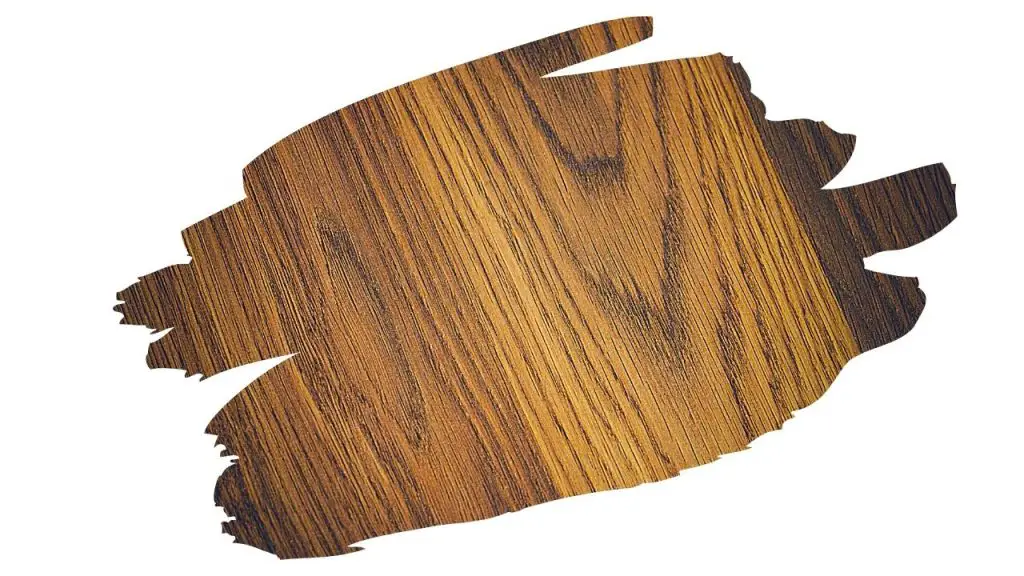A question that often bugs woodworkers is whether or not wood conditioner is even necessary.
And honestly, do we really need to bother applying wood conditioner before a danish oil finish?
Well, pre-staining surfaces with wood conditioner is the best way to prevent oil-based stains from appearing patchy and uneven. It is particularly important to use wood conditioner on very knotty softwoods such as Pine. And it should also be used on porous hardwoods such as Birch, and Maple.
What is the difference between porous and nonporous wood? Porous wood is made up of hollow pipe-shaped cell “pores” (often referred to as “vessels”). These pores allow for water to flow freely inside the trunk of the tree. Non-porous woods, (commonly softwood types), don’t have these pores.

This post may contain affiliate links to products that we receive a commission for (at no additional cost to you). Learn more here.
What Is Wood Conditioner Really Used For?
Whenever we use wood conditioner, it is because we are trying to prevent our stain coats from appearing all blotchy.
Wood, especially wood that is filled with pores, doesn’t absorb oil-based stains evenly at all. More often than not, if you were to just apply Danish Oil onto bare porous wood, the finish would look a right mess.
So the job of wood conditioner is to get into those pores and get absorbed right into the grain. So that when we then apply a stain over it, that stain layers onto the surface of timber more evenly.
Is Wood Conditioner Necessary?
You don’t always need to use wood conditioner if you want to apply Danish Oil. For example, lets say your work piece is made from a non-porous softwood that is free from knots.
If you were to brush on an oil stain finish, then the oil will likely stain on evenly.
In all other cases, however, you will need to add a pre-stain coat to seal those wood pores first. This pre-staining step is crucial, because it slows down the rate that Danish oil gets absorbed into wood.
That slow and steady absorption rate is what leaves behind a fantastic looking finish (after the oil is wholly cured).
Related Post: What You Need To Know About Danish Oil vs Tru Oil
What Can Be Used As A Wood Conditioner?
For an oil-based stain, you need to use an oil-based conditioner. Why? Well, because oil and water don’t really get along very well.
If you were to use a water-based conditioner, (before coating on the Danish oil), then the oil won’t adhere to it and stay on evenly.
One of the best and most reliable oil-based conditioners on the market is the Minwax 61500444 Pre Stain Wood Conditioner.
Using Minwax Conditioner Before Applying Danish Oil (3 Quick Tips)
If you decide you want to use Minwax conditioner on your woodwork piece, then here are a few quick tips to getting the most out of it;
1 Apply Conditioner Onto A Smooth Surface
Make sure the surface of the wood is even and smooth. Which means you will need to even out dints and dents, (and remove all dust and dirt), before you get started.
2 Don’t Wait For It To Completely Dry
Apply the Danish oil before the conditioner drys out. This is important, because if you leave it too long, the wood conditioner could end up becoming completely absorbed by the wood (rendering it ineffective at preventing blotchy staining).
How long should you wait before applying Danish oil? It all depends on your brand of wood conditioner. With Minwax Conditioner you have a window of anywhere between 15 minutes to 2 hours to apply that oil finish.
3 Apply More Than One Danish Oil Coat
The pre-stain is going to end up making your Danish oil finish look lighter than advertised. This is because wood conditioner is so good at its job at preventing Danish oil from being quickly absorbed.
So make sure you have enough Danish oil to apply at least two coats. But, a couple of coats should be enough to get your woodwork project glowing with rich rustic color.
What Can I Use Instead Of Wood Conditioner?
You have a couple of options if you want to substitute wood conditioner for something else instead;
Gel Stain (Good Alternative)
A gel stain coat can be a great way to pre-seal the surface of wood. Designed to sit atop wood, a gel stain will prevent Danish oil from soaking into porous wood unevenly.
You can get Minwax 660910000 Gel Stain in a wide range of rustic colors (but be sure you grab a color that matches the hue of your Danish oil).
Make Your Own (Last Resort Option – Not Recommended)
If you have a solution such as Shellac, Vanish or Lacquer to hand, you can make your own wood conditioner instead.
Now, typically these solvents need to be thinned out first before using them to seal in porous woods.
For example, you can thin varnish with turpentine. Or you can blend shellac with denatured alcohol to dilute it a bit.
Denatured alcohol is a really useful solution to have around. For instance, did you know that you can use denatured alcohol to quickly dry green wood? Click here to discover how: Drying Wood Slices With Denatured Alcohol.
Now, the DIY method might save you a few bucks. However, it is going to add an unnecessary amount of extra work.
Why? Well, because you will likely need to sand down these DIY conditioners after their coat cures. Only after sanding down the wood, until the surface is smooth and even again, can you then go onto apply Danish Oil.
Do You Ever Need To Sand After Applying Minwax Wood Conditioner? If you are using a water based pre-stain, then yes, you will need to lightly sand the surface. This is because when you apply this type of pre-stain, the wood will wick up all the water from the conditioner. That moisture intake causes wood fibers to expand a little. Which is why you will often need to sand the wood down to even things out after applying this type of pre-stain.
I Really Want To Make My Own… What Specific Wood Conditioner Substitute Can I Use?
A mix of polyurethane and mineral spirits can make a homemade wood conditioner.
Mineral spirits are magical for preventing blotchy stain absorption.
In fact, Mineral oil is commonly used to remove stains and prep wood surfaces for staining. You can learn more about this in our post here: Can You Use Mineral Spirits Before Wood Stain?
Mineral spirits blended with polyurethane will help wood absorb stain slowly and evenly. And the best blend ratio is a simple 1:2 ratio – 1 part poly, 2 parts mineral spirits.
But, there is one crucial caveat to this… always use the right type of polyurethane!
Only use oil-based poly (not water-based) for your homemade wood conditioner if you use oil-based stain.
And another thing, give your homemade blend time to dry before applying the stain. At least 24 hours, ideally.
If it hasn’t dried in a day, check out our post here to speed it up: Polyurethane Not Drying? What You Can Do To Fix It
Final Thoughts
So, the next time you are thinking about using a wood conditioner before applying your favorite oil finish, just remember;
- Wood conditioner is the best way to prevent oil-based stains from turning out blotchy on porous woods.
- You will need to use wood conditioner on knotty woods like Pine, and porous hardwoods such as Alder, Maple or Birch.
- Always make sure the surface of the wood is clear of scratches and dirt before you apply wood conditioner.



